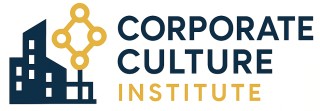
Understanding Workforce Monitoring
A Comprehensive Overview of Workforce Assessment
To effectively monitor workforce performance, it is essential to grasp the fundamental aspects of workforce assessment. This process involves the systematic observation and analysis of employees' activities to gauge productivity and improve business outcomes. With the growing demand for business efficiency and productivity, workforce monitoring has become a crucial component in achieving these goals.
Whether within an office environment or through remote work, understanding how employee actions translate into productivity and overall team performance is vital. A variety of management tools and monitoring software are used to track employee activities, enabling businesses to collect valuable data about time management, employee performance, and productivity levels. These tools often feature capabilities such as real-time tracking, time attendance, and project management, offering a comprehensive glimpse into employee activity.
Recognizing the diverse nature of modern work environments, businesses now employ different monitoring strategies to cater to both onsite and remote work settings. Tracking workforce performance is not solely about monitoring employees; it's about understanding and optimizing how they work to enhance overall business efficiency. This includes not only the use of technology but also tailoring monitoring strategies to the specific needs of a business.
For effective workforce management, it's important to consider the integration of these technologies while maintaining a balance with ethical employee monitoring practices. Organizations must also focus on building employee trust, ensuring that monitoring is conducted transparently and responsibly, fostering a positive workplace culture.
Technological Tools for Monitoring
Leveraging Modern Technologies for Enhanced Employee Performance
Monitoring workforce performance requires a strategic combination of advanced technologies and tools. The influx of monitoring software offers various options for businesses to effectively track employee activities and manage productivity levels, irrespective of the work environment, be it remote or in an office. Among the essential tools, time tracking software stands out as a critical component of workforce management systems. These tools provide the capability to monitor employee time attendance, ensure efficient time management, and evaluate real-time productivity. By recording the time spent on various tasks, businesses can utilize this data to enhance workforce performance, identify bottlenecks, and streamline management processes. Effective employee monitoring software should incorporate features such as real-time tracking, project management integration, and comprehensive data analytics. These features not only help track employee activities but also assist in crafting personalized performance improvement plans, driven by precise metrics and insights. Remote work has necessitated the evolution of monitoring tools, with many businesses adopting cloud-based solutions to maintain seamless oversight of employee productivity. These solutions are particularly valuable for monitoring remote employee activity, furnishing managers with the insights needed for informed decision-making and ensuring that the team remains aligned with business goals. It's vital for businesses to choose the right tools that offer a balance between insightful workforce data collection and respect for employee privacy. The right technology can transform workplace monitoring from a purely administrative task to a strategic advantage, empowering employees while enhancing overall business productivity.Ethical Considerations in Employee Monitoring
Ethical Implications of Workplace Monitoring
As businesses increasingly turn to monitoring software to boost employee productivity and enhance overall workforce management, it’s critical to weigh the ethical implications. While monitoring tools help track employee activity, ensuring that they do so respectfully and responsibly becomes essential.
Deploying these tools in any management system necessitates a balance between employee privacy and business interests. By integrating features such as real-time time tracking and activity tracking, companies can indeed enhance performance management. However, they must also be transparent about the specifics of their workplace monitoring practices.
Consider, for instance, how these management tools might be perceived by employees. Transparency about the data collected and how it's used is crucial, as is real-time communication about the objectives of monitoring. This approach fosters more trust within the team, which is vital especially for those participating in remote work.
Integrating monitoring tools with clear policies that outline what's tracked can enhance trust while maintaining integrity. For deeper insights into how employee satisfaction can impact these efforts, a valuable resource can be found here, where insights on employee management can further illuminate this discussion.
Balancing Monitoring with Employee Trust
Balancing the Scales of Trust and Monitoring
In today’s business environment, keeping an eye on employee performance is vital for efficient workforce management. Monitoring software and tools help businesses track employee activities, boosting productivity and optimizing real-time management strategies. However, a lingering question persists: How do companies achieve effective workplace monitoring without eroding employee trust?
Finding the right balance between oversight and autonomy is essential. Employees who feel trusted tend to exhibit higher levels of productivity and engagement. Here are some strategies to maintain this delicate equilibrium:
- Transparent Communication: Informing employees about monitoring objectives and the types of data being tracked fosters trust. Clearly communicate how workforce monitoring aids personal development and organizational goals.
- Purpose-Driven Monitoring: Use monitoring tools as performance enhancers, not as surveillance mechanisms. Emphasize their practical purposes such as time attendance and project management improvement, rather than as a means of micromanagement.
- Privacy Safeguards: Employee privacy should be a priority. Ensure that monitoring systems comply with legal standards and use employee activity data solely for professional growth and management insights.
By balancing these elements, businesses can create an environment where both management and workforce thrive. Employee trust sustains long-term growth, making the relationship between monitoring and trust pivotal in a successful organization.





